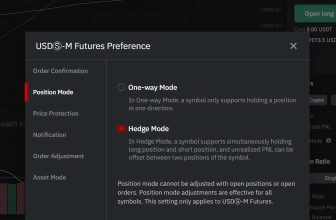As an investor or trader, understanding the concepts of risk management and capital management is crucial for success in the crypto, forex, or stock market. These two concepts are often used interchangeably but are not the same. In this article, we will explore the differences between risk management and capital management and how to use both in your trading strategy effectively.
Introduction
Trading in the financial markets, whether crypto, forex, or stocks, can be risky. Risk management and capital management are two key strategies traders use to minimize risk and maximize profits. While they may seem similar, there are distinct differences between the two.
What is Risk Management?
Risk management is the process of identifying, assessing, and controlling potential risks that may impact a trader’s portfolio. This process involves evaluating the risk of a particular trade, calculating the potential reward, and determining the appropriate amount of capital to allocate to the trade.
Key Objectives
- Protecting a trader’s capital from excessive losses.
- Maximizing returns on investments while controlling risks.
- Maintaining a balanced and diversified portfolio to reduce the impact of market volatility.
Types of Risk
There are several types of risks that traders face in the financial markets, including:
- Market risk: the risk of losses due to changes in market conditions or economic factors
- Credit risk: the risk of losses due to counterparty default or non-payment
- Liquidity risk: the risk of losses due to the inability to sell assets quickly
- Operational risk: the risk of losses due to internal or external factors, such as fraud or errors
Risk Management Strategies
Traders use a variety of risk management strategies to mitigate potential losses, including:
- Stop-loss orders: a pre-determined order to sell an asset if it reaches a certain price level
- Hedging: taking an offsetting position in a different asset to reduce overall portfolio risk
- Diversification: spreading capital across different assets to reduce concentration risk
- Position sizing: adjusting the size of a trade based on the level of risk and potential reward
What is Capital Management?
Capital management, or money management, determines the appropriate amount of capital to allocate to each trade or investment. This process involves setting a risk/reward ratio, determining the maximum amount of capital to risk on a trade, and managing position sizes accordingly.
Key Objectives
- Optimizing returns on investments while preserving capital.
- Ensuring long-term trading success by preventing account depletion.
- Achieving a well-diversified and balanced portfolio to withstand market fluctuations.
Capital Management Strategies
Traders use a variety of capital management strategies to maximize profits and minimize losses, including:
- Fixed fractional position sizing: allocating a fixed percentage of capital to each trade based on the account size
- Kelly criterion: using a mathematical formula to determine the optimal amount of capital to allocate to a trade based on the probability of success
- Martingale: doubling the position size after each losing trade to recoup losses and generate profits
- Anti-Martingale: increasing the position size after each winning trade to maximize profits while minimizing risk
The Differences Between Risk Management and Capital Management
- Focus: Risk management primarily focuses on protecting a trader’s capital from potential losses, while capital management aims to optimize returns while preserving capital.
- Scope: Risk management assesses and mitigates losses in trading activities, while capital management involves managing a trader’s financial resources and strategically allocating capital among various assets or trades.
- Techniques and Strategies: Some techniques and strategies, such as position sizing and diversification, are common to risk and capital management. However, risk management also includes setting stop losses and hedging, while capital management involves portfolio rebalancing and advanced techniques like dynamic position sizing.
How to Use Risk Management and Capital Management Together
Using risk and capital management together in a cohesive trading strategy is important to be a successful trader. By using risk management to identify potential risks and capital management to allocate the appropriate amount of capital, traders can minimize losses and maximize profits.
Tips for Effective Risk Management and Capital Management
- Set a maximum risk/reward ratio for each trade.
- Use stop-loss orders to limit potential losses.
- Diversify your portfolio to reduce concentration risk.
- Use position sizing to adjust each trade’s size based on the risk level and potential reward.
- Consider using a combination of risk management and capital management strategies to optimize your trading strategy.
Frequently Asked Questions (FAQs)
What is the main difference between risk management and capital management?
The main difference between risk management and capital management lies in their focus. Risk management primarily focuses on protecting a trader’s capital from potential losses, while capital management aims to optimize returns while preserving capital.
Can risk management and capital management be used together in trading?
Yes, risk management and capital management are often used together in trading to ensure a trader’s long-term success by protecting their capital and optimizing returns. A comprehensive trading plan should incorporate both risk and capital management techniques.
Are there any common techniques or strategies for risk management and capital management?
Yes, some techniques and strategies are common to risk and capital management, such as position sizing and diversification. These strategies help protect a trader’s capital from excessive losses and optimize returns on investments.
How do risk management and capital management contribute to a trader’s long-term success?
Risk management protects a trader’s capital from potential losses by minimizing the impact of unfavorable market movements, while capital management optimizes returns while preserving capital. Using risk and capital management techniques, traders can ensure their long-term success by maintaining a well-diversified and balanced portfolio and preventing account depletion.
How can traders incorporate risk management and capital management into their trading plans?
Traders can incorporate risk management and capital management into their trading plans by developing clear strategies for each aspect. This may involve setting stop losses and employing hedging strategies for risk management while allocating capital efficiently among various assets or trades and rebalancing portfolios for capital management. A comprehensive trading plan should consider a trader’s investment goals, risk tolerance, and the specific characteristics of the financial markets they trade in.






